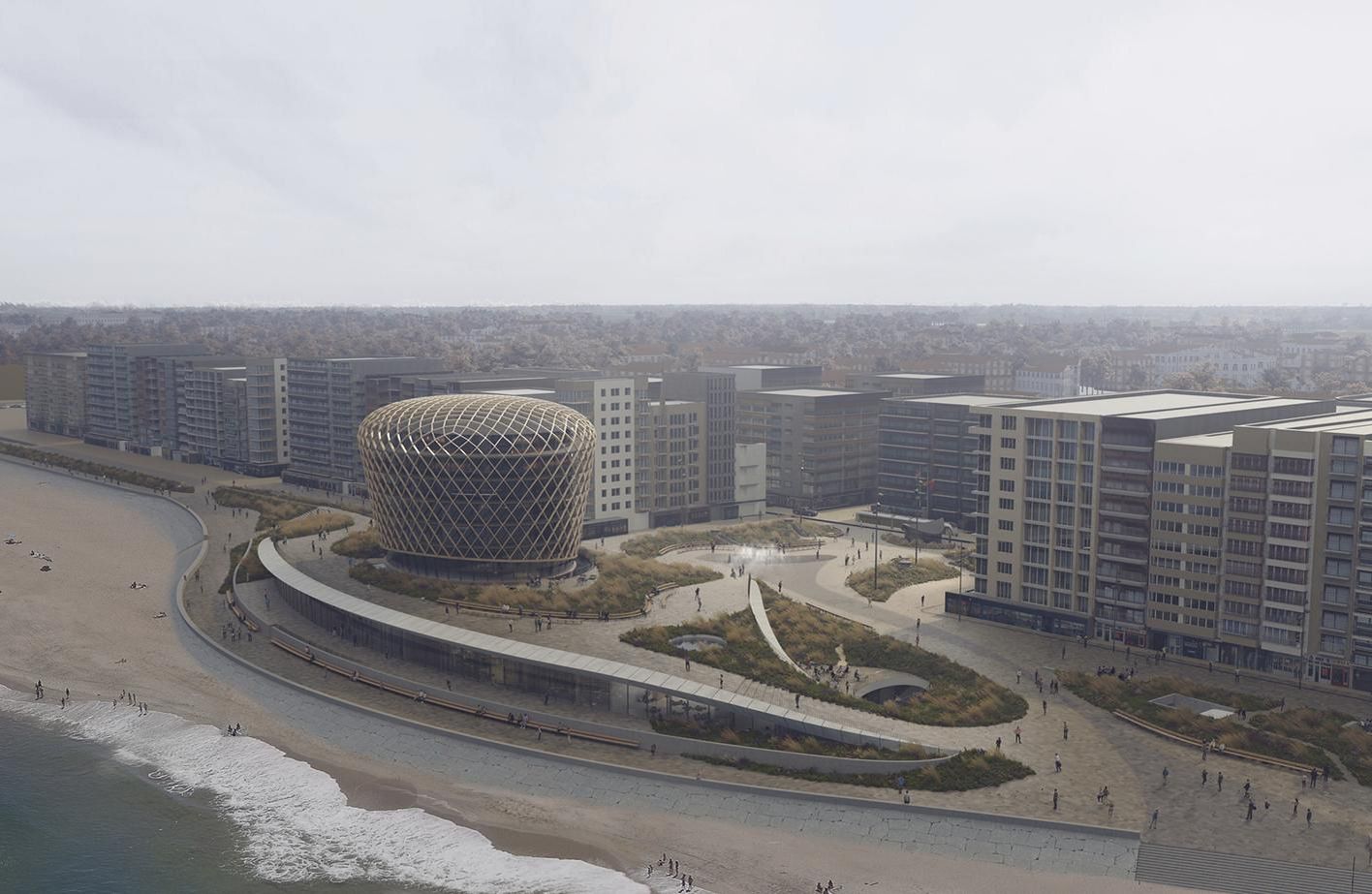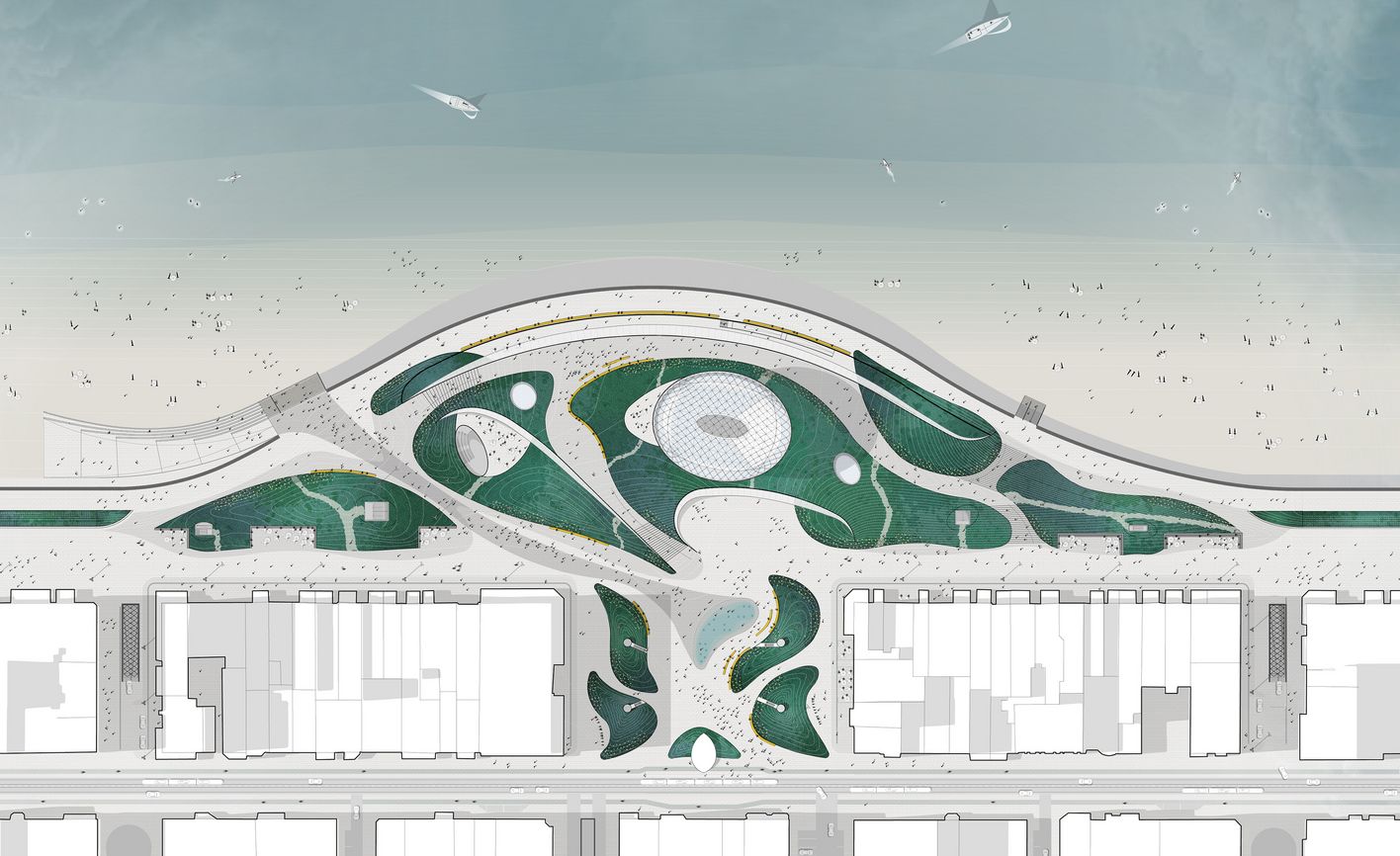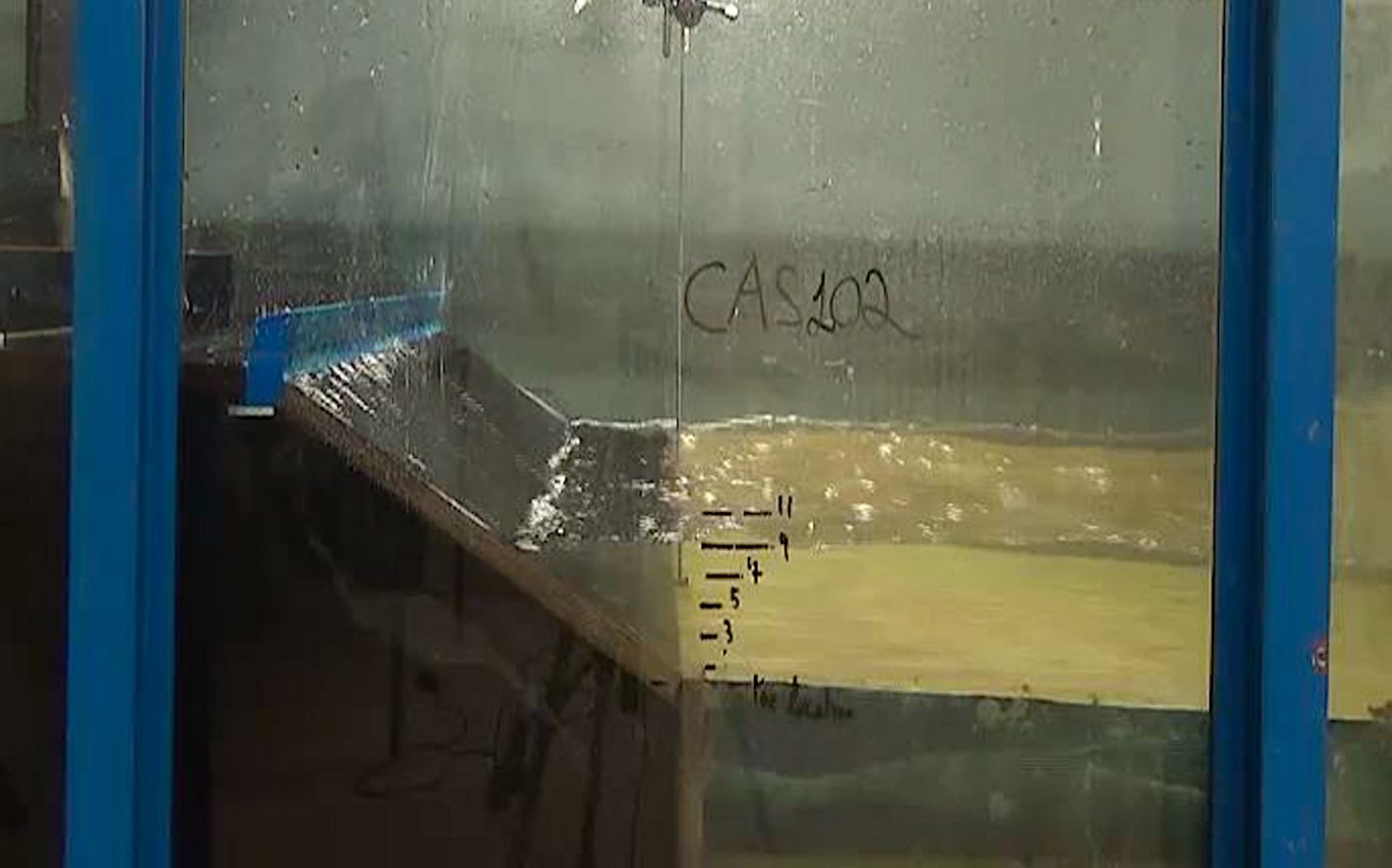Published on 05 September 2022
Wave-buffering extension makes award-winning events centre in Middelkerke superstorm-proof
The events centre in Middelkerke on the Belgian North Sea coast has been awarded the prestigious International Architecture Award for 2022. The design was created under the direction and supervision of Debuild and was built by the architectural firm ZJA and DELVA landscape architects, in collaboration with OZ and Bureau Bouwtechniek and a series of experts. Witteveen+Bos was involved from the outset as a flood-defence adviser.
The award-winning events centre in Middelkerke houses a casino, a hotel, a restaurant, a multifunctional venue hall, an underground car park and as a result a street-level area closed to traffic.
Wave-buffering extension
The original landscape played a significant role in how the design was conceived. The result is a remodelled dune landscape on the existing coastline. At the same time, the opportunity was also taken to strengthen the existing seawall. However, the distinctively undulating design of the sea-facing building produces a disproportionate load on the structure during a storm.
This meant incorporating a relatively new innovation in the construction of the seawall to ensure water safety: a wave-buffering extension for sea defence and storm resistance. A wave-buffering extension is a seawall construction designed to control the waves. It consists of a ramp, an upright profile that acts as a breakwater and a horizontal overflow area to the rear. The construction ensures that the detrimental forces are absorbed and do not affect the building.
Tested against a superstorm
The dimensions and construction of the wave-buffering extension have been optimised to withstand a superstorm. The benchmark for this were the most devastating storms that can strike this part of the Belgian coast once every thousand years. To ensure storm resistance, the construction was first designed on the basis of numerical model simulations (XBeach2D and SWASH 2D).
The construction was then reproduced on a scale of 1 to 25 in the wave flume at Ghent University. This made it possible to duplicate the storm forces on the construction and the tidal surges towards the building so that the resistance could be verified.
The desired vegetation strip on the edge of the overflow area formed an additional focus area when designing the wave-buffering extension. This green element was considered essential by the architect. For this reason, the simulations in the wave flume were carried out with a model that included the vegetation strip. Two different types of simulation were carried out: simulations with a stable green strip and simulations with an eroded green strip. The simulations showed that, irrespective of the scenario, the award-winning events centre is able to withstand a superstorm.
The International Architecture Awards are highly regarded in the world of architecture and are an initiative of the Chicago Athenaeum Museum of Architecture and Design and the European Centre for Architecture Art Design and Urban Studies.


